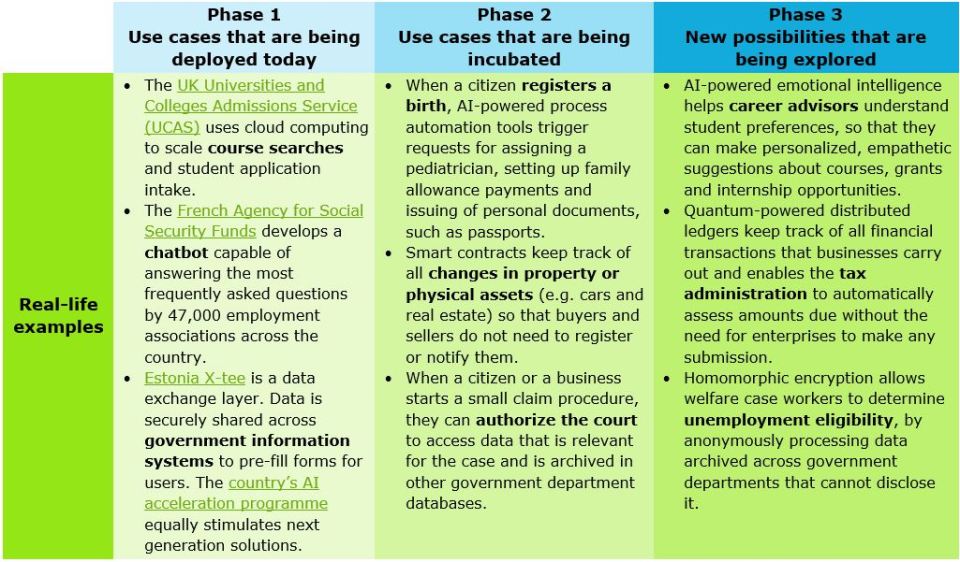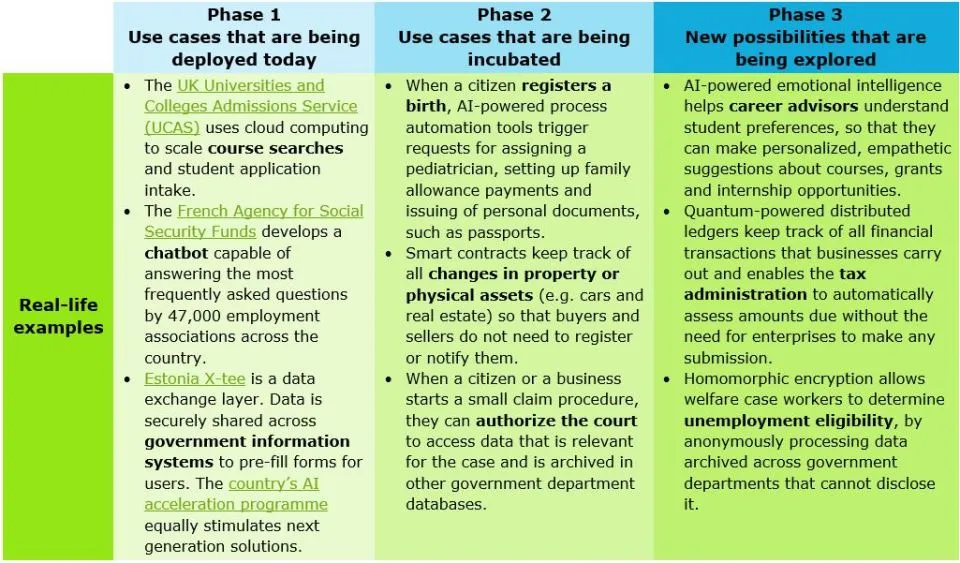Connecting the “bots” with holistic digital government
Blog: Capgemini CTO Blog
Governments turning complex offline procedures into complex online procedures do not make our citizen hearts race. A one-on-one shift from offline to online government services seems to be a bureaucratic mare’s nest and fails to fulfill the potential of digital transformation.
Citizens expect governments to be good stewards of their taxpayer money. They want governments to act transparently while protecting their privacy. Requests should be resolved rapidly, and high-quality service should be accessible regardless of our income, ethnicity, or physical and mental abilities. And they want to access those services, when, where and how they prefer. In line with the concept of Society 5.0, governments are shifting from solving problems in a fragmented, siloed manner, towards re-imagining how to deliver public value for the society as a whole.
Public sector leaders want to make their services citizen-centric while reducing costs. Although the citizen-first vision is widely understood conceptually, in the real world, public service officials must balance the quality of services with often limited budgets, legacy processes and systems, and skill gaps. The recently published European Commission eGovernment Benchmark shows that progress is made, but rather slowly. Investing in digital technology can speed up the modernization of public services, but that alone is not enough. Government leaders need a holistic set of guiding principles to design, manage, and operate the public services of the future.
What does holistic digital government look like?
European government leaders that want to deliver on the mission of creating public value must drive citizen-centric innovations empowering a new ETHIC of public services – Efficient, Trusted, Highly responsive, Inclusive, Convenient – the reality:
- Efficient – Technology investment must enable to save scarce resources or direct them to the cases that need a more direct, personal, and offline touch.
- Trusted – Digital services must be designed and operated to protect privacy and be resilient to cyberattacks.
- Highly responsive – Technology must enabler faster and relevant services, so that there is no downside to foregoing personal contact with a government official. Governments that try to proactively reach out to citizens or groups of citizens to personalize services, but fail to be responsive, will disappoint citizens.
- Inclusive – Governments must make sure that digital services, and the use of advanced analytics and artificial intelligence does not create a new societal rift between digital natives and the less-digital literates, or that they penalize certain neighborhoods or income groups.
- Convenient – Governments must allow citizens to choose the digital channel that is best suited to access services in different stages of the service delivery journey and for different life events, while maintaining consistency of experiences.
The next phases of eGovernment technology innovation reached by holism
We believe that a more holistic approach to online service innovation will help governments to keep up fast-paced digitalization while meeting user demands. As technology evolution continues, investments in advanced analytics and artificial intelligence, blockchain, cloud computing, and quantum computing will enable your organization to progress along different areas of eGovernment. It is important to notice that the impact of these technologies will come in waves. Cloud computing, APIs, microservices architectures, big data, and data analytics are mature and already being leveraged to advance the digital service provision. We expect artificial intelligence, augmented and virtual reality, and blockchain to be part of the second wave, because they have some clear use cases (e.g. AI-powered chatbots for improved usability of digital services and blockchain-enabled digital identities). However, further technology evolution and use case alignment are needed, as well as ‘soft policy instruments’ described by the European Commission’s Joint Research Centre on AI. Quantum Computing, Brain-to-Computer Interaction, Homomorphic Encryption, Neuromorphic Computing and other technologies at the frontier of innovation will form part of a third wave of applications in the next decade. The figure below describes how technology will impact different eGovernment facets, with the use of real-life examples already existing or upcoming.
The next phases of eGovernment technology innovation

Getting ready to reap the digital fruits of a holistic approach
While technological change is certainly among drivers, tech-centric paradigms proved to be suboptimal in the delivery of public sector services. Digitalization greatly enhances the set of possible approaches and delivery channels for public services, but it’s the people that are at the center of the change. The focus on ETHIC (Efficient, Trusted, Highly responsive, Inclusive, Convenient) services should ensure that while governments take advantage of all available technological possibilities, they put user-centric public value first. This will require investing in citizen engagement to bring users onboard and involving front-line civil servants to drive organizational change and intelligent process automation.
Authors:
 Niels Van Der Linden – Senior Director, EU Lead at Capgemini Invent
Niels Van Der Linden – Senior Director, EU Lead at Capgemini Invent
Niels advise Governments in realising digital transformation (‘more with less’) through applying performance evaluations.
Co-authors:

Sem Enzerink – Senior Consultant at Capgemini Invent
Sem helps shape the digital public sector in Europe with strategic policy advisory and research.

Jochem Dogger – Consultant, Insight Driven Enterprise, Public Sector
As consultant in the Data Strategy & Data Science unit of Capgemini Invent, Jochem helps organisations become digital leaders by translating business questions to digital and data driven solutions.

Massimiliano Claps – Research Director at IDC
Massimiliano explores the business and policy impacts of how technology is changing passenger and freight mobility in cities. And, the impact of AI in the public sector at large.
